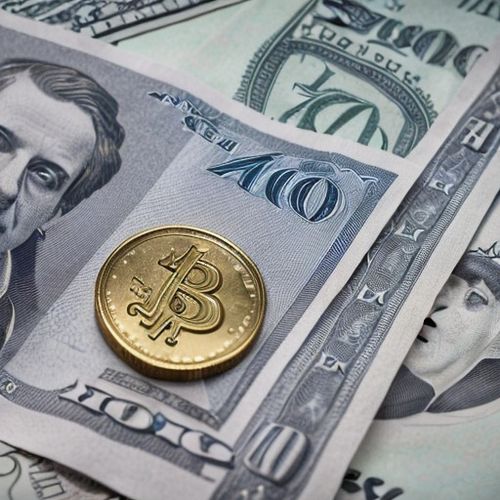The American consumer landscape has undergone a subtle but significant transformation in recent years, as businesses grapple with the phenomenon of "shrinkflation" – the practice of reducing product sizes while maintaining or even increasing prices. This pricing strategy, born out of inflationary pressures and supply chain disruptions, has forced consumer goods companies to innovate their approaches to maintain customer loyalty while protecting margins.
Behind the scenes of every grocery store shelf and e-commerce platform, a quiet revolution in pricing psychology is taking place. Companies are discovering that today's inflation-weary shoppers are more perceptive than ever to traditional shrinkflation tactics. The old playbook of simply shrinking cereal boxes or reducing chip counts no longer suffices in an era of social media scrutiny and price transparency apps.
The new wave of pricing innovation goes beyond mere package downsizing. Forward-thinking brands are experimenting with what industry insiders call "value architecture" – carefully reconstructing product offerings to deliver perceived value through alternative means. Some are introducing multi-tiered product lines that give budget-conscious consumers options without cheapening core brands. Others are leveraging packaging redesigns that emphasize sustainability or convenience to justify price adjustments.
One particularly intriguing development has been the rise of "stealth premiumization." Rather than simply raising prices across the board, companies are introducing subtle product enhancements – a more ergonomic handle on cleaning products, upgraded fabrics in apparel lines, or proprietary spice blends in food items – that allow for price increases framed as delivering added value. This approach maintains the illusion of stable pricing for basic items while creating upsell opportunities.
The psychology of portion control has become another powerful tool in the pricing strategist's arsenal. Health-conscious positioning allows companies to frame smaller packages as helping consumers with moderation, simultaneously addressing shrinkflation concerns and wellness trends. "Right-sized" portions and "single-serve" options proliferate across categories from snacks to beverages, often carrying higher per-unit prices under the guise of convenience and health benefits.
Digital pricing elasticity tools have given consumer goods companies unprecedented ability to test and optimize their strategies. Sophisticated algorithms now analyze real-time sales data across regions and channels, allowing for micro-adjustments in package sizes and pricing that would have been impossible just a few years ago. This granular approach enables companies to find the sweet spot where margin objectives meet consumer tolerance thresholds.
Perhaps the most surprising trend has been the embrace of radical transparency by some brands. A handful of companies have begun openly acknowledging shrinkflation in their marketing, pairing it with explanations about rising input costs and commitments to maintain quality. Early results suggest this honest approach actually builds trust with certain consumer segments, particularly when accompanied by clear communication about where the money goes.
Subscription models and membership programs have emerged as another creative response to pricing pressures. By locking in recurring revenue streams, companies gain predictability that allows for more strategic pricing decisions. These programs often include exclusive products or early access to new items, creating perceived value that cushions against resistance to price increases.
The current environment has also seen a resurgence of old-school pricing tactics with modern twists. "Bundle economics" – offering carefully curated product combinations at slight discounts – has returned with vigor, particularly in e-commerce. Similarly, temporary "size expansions" during promotional periods create anchoring effects that make regular sizes seem more reasonable when prices later increase.
Looking ahead, industry analysts predict these pricing innovations will continue evolving as companies seek sustainable ways to navigate economic uncertainty. The most successful strategies will likely be those that balance margin needs with genuine consumer value creation, recognizing that in today's marketplace, perception often matters as much as the price tag itself.
What remains clear is that the era of straightforward annual price increases may be ending. In its place, a more nuanced and sophisticated approach to pricing strategy is emerging – one that treats price as a multidimensional lever rather than a simple number. As consumer awareness grows and economic conditions remain volatile, the companies that master this complex new pricing landscape will be those that survive and thrive in the age of shrinkflation.

By Ryan Martin/Apr 7, 2025

By Ryan Martin/Apr 7, 2025

By David Anderson/Apr 7, 2025

By Olivia Reed/Apr 6, 2025

By Daniel Scott/Apr 6, 2025

By Victoria Gonzalez/Apr 6, 2025

By John Smith/Apr 6, 2025

By Elizabeth Taylor/Apr 6, 2025

By James Moore/Apr 6, 2025

By Megan Clark/Apr 6, 2025

By Daniel Scott/Apr 6, 2025

By William Miller/Apr 6, 2025

By Samuel Cooper/Apr 6, 2025

By Amanda Phillips/Apr 6, 2025

By Natalie Campbell/Apr 6, 2025

By Noah Bell/Apr 6, 2025

By Elizabeth Taylor/Apr 6, 2025